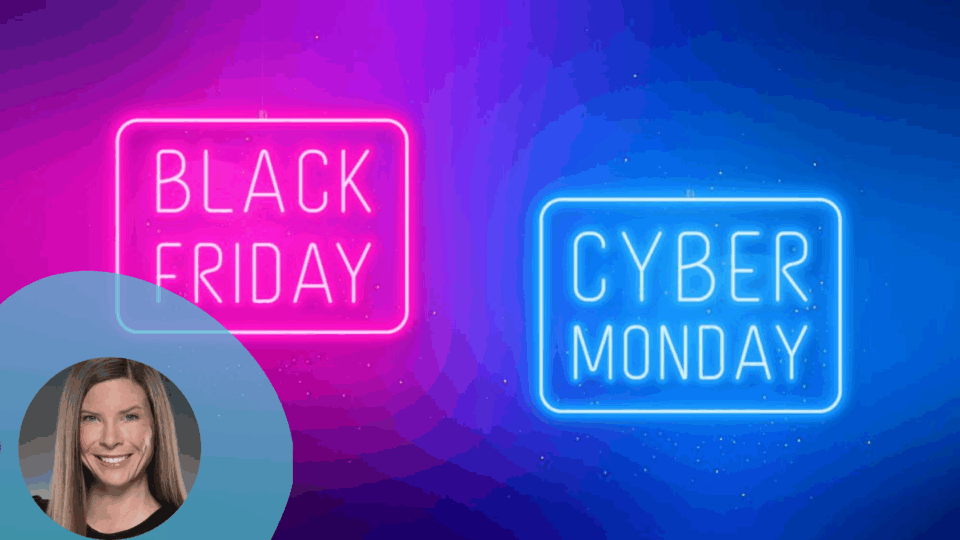The modern retail calendar is packed with mega-events like Prime Day, Black Friday, Cyber Monday and others that can make or break a brand’s quarterly goals. These are no longer just moments; they’re movements. And while consumers may wait for the clock to strike midnight on a sale, savvy marketers know the real work starts much earlier.
If you’re only activating campaigns on the day of the sale, you’re already behind. The cart is the end of the customer journey, not the beginning. The path to conversion begins with understanding motivations, engaging through relevant channels and preparing audiences well in advance.
The Shopper has Changed and so Should Your Strategy
Today’s holiday shopper isn’t driven purely by tradition or gifting. Increasingly, they’re shopping for themselves. While gifting still plays a role, self-reward and opportunistic spending have become core motivators during peak sales windows.
Recent studies show that a majority of consumers who engage in Black Friday or Cyber Monday sales say they’re shopping for both others and themselves. And it’s not just what they’re buying — but why. For many, it’s about convenience, value or the simple thrill of the deal.
This has important implications. Traditional personas focused solely on age, gender or household income are no longer enough. Marketers must dig deeper into emotional drivers, personal habits and even psychological traits to understand how to position their brand in a crowded and chaotic landscape.
Retailer-Owned Channels are Reclaiming the Frontline
When most marketers think of high-volume shopping days, they picture paid social, search and influencer blitzes. And while those channels still matter, recent consumer behavior suggests another powerful (and sometimes overlooked) tool: your own backyard.
Research shows that retailer websites are now the most common place consumers see holiday sale promotions, outpacing even social media. In fact, over one-third of Black Friday and Cyber Monday shoppers remember seeing ads via email promotion, which is more than cited social media. Similarly, email remains a powerful and cost-effective conversion engine, especially when campaigns are personalized and behavior-triggered.
These “owned” channels offer not only reach, but control. You decide the message, timing and experience — without bidding against competitors.
As budgets tighten and performance scrutiny rises, investing in channels you already control is a strategic must.
Move Beyond Demographics: Understand the Why
The era of audience lists labeled “Women 25–44” is fading. In its place? Segmentation that incorporates behavioral intent, psychographics and even personality science.
Why does this matter? Because two shoppers with identical demographics might behave completely differently depending on their motivations. One might be a spontaneous shopper drawn in by urgency and influencer content, while the other may be more analytical, needing product reviews and a clear value proposition to commit.
Recent research using the Big Five personality framework has shown that traits like extraversion and openness are associated with a greater likelihood of purchasing from online and social ads. Conversely, those who are more spontaneous and emotionally responsive tend to be more receptive to dynamic content like influencer campaigns and time-sensitive offers.
These aren’t gimmicks. They’re research-backed insights that can inform not just who you target, but how you engage them.
Creative + Timing: The Right Offer at the Right Moment
It’s not enough to have a great message. You need to deliver it at the right time to the right audience. That’s where behavioral data and smart sequencing come into play.
Start by identifying how different segments interact with your brand. Who opens emails in the morning? Who responds best to countdowns? Who clicks on influencer links at 9 p.m. but buys on desktop the next day?
Timing isn’t just about what day or hour you deploy an ad, it’s about matching your outreach to the behavioral rhythm of your audience. Some consumers are more likely to engage with early access offers or “sneak peeks,” while others are more responsive to last-minute urgency. Personality and behavior-based research suggests these timing preferences aren’t random — they’re rooted in how people process decisions and respond to perceived scarcity or exclusivity.
Use that intelligence to time your outreach. Build “early bird” and “last-minute” journeys. Create urgency for the spontaneous buyers, reassurance for the conscientious purchasers and VIP exclusivity for your loyal base.
By sequencing campaigns around these patterns, marketers can create higher-impact journeys that feel both personalized and perfectly timed.
From Reactive to Predictive
Too many marketers treat peak shopping events as isolated sprints that feel urgent, chaotic and high-pressure. But the reality is that these events are best approached as part of a larger marathon. What you do now informs what you can learn, segment and optimize later.
Start testing your audiences in the lead-up to the next major sale. Use smaller campaigns like back-to-school, Halloween or even a product launch to refine your understanding of audience behavior. What channels work best? What messages drive clicks? What traits correlate with high lifetime value?
In doing so, you shift from a reactive marketer to a predictive one — someone who doesn’t just chase conversions but engineers them through insight and intention.
Final Thought: The Cart is Just the Beginning
The most successful brands aren’t waiting for consumers to arrive at checkout. They’re guiding them long before that moment through relevance, timing and trust.
Peak shopping events may feel like the finish line. But in reality, they’re a high-stakes checkpoint in an ongoing customer journey. When you understand the shopper, own the experience and personalize with purpose, you don’t just win a sale, you earn a relationship.
And that’s the real prize at the end of the cart.
Anna Brantley is AnalyticsIQ’s Chief Revenue Officer. She earned her Bachelor of Education in Health Promotion & Behavior from The University of Georgia. Brantley has over two decades of successfully serving clients and developing impactful partnerships. She is passionate about driving revenue growth through strategic partnerships and marketing innovation.




